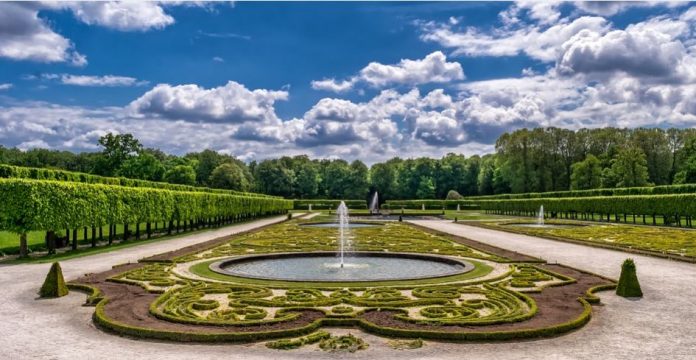Living in an arid or semi-arid region that habitually receives scarce rainfall does not mean that you are automatically destined to a dry dusty garden.
The term “xeriscape” refers to the designing of a garden that employs seven water-conserving methods.
This type of garden works well for areas that are prone to mild drought conditions. Of course, those who just wish to conserve water will certainly appreciate that it is an ecologically friendly method of gardening.
It may also prove beneficial for people who do not choose to be bothered with the time and expense of traditional water-consuming gardens during the summer season.
1. Planning and Designing the Landscape
As with any garden, the first thing that needs to be done is to measure the garden plot. Then with a piece of graph paper or a computer gardening software, make a detailed layout of this space noting all elements like the house, pathways, existing trees and shrubbery that will be kept, etc.
Also, take note of the topography and exposure. Next, you will want to take into account your budget.
Remember that not everything has to be done immediately. Your plan can be carried out in stages.
In addition, you may include a wish list of features you would like to add, for example, a hot tub or gazebo.
Do not forget to consider how much maintenance you will want to do and how much water will be required.
2. Soil Analysis and Amendment
Good soil is a must for plants to develop deep root systems that are essential to endure drought conditions.
Look at a sample of your dirt first to determine what materials the soil includes. Should your soil be mainly clay, the density of its texture does not allow water to be readily absorbed causing wasteful runoff and it makes it difficult for roots to grow.
However, if it is mostly sand, water percolates too fast for the plants to soak it up. To correct these problems you need to improve the soil.
You can accomplish this goal by incorporating about three to four inches of organic materials such as manure and compost to your dirt by tilling it down into the top six inches of the ground.
Still, it is important to realize, that some plants actually do thrive in poorer soil.
3. Lawn Location
You should consider how much grass you really need or desire. Typically most lawns require a lot of water and upkeep.
Therefore, you should try to reduce the use of turf in your design to areas where its use is prudent.
Do not put grass in heavy traffic areas or hard to maintain spots, like slopes or shade. You may wish to try planting more drought-tolerant grasses.
However, they usually come with drawbacks, such as a long-dormant phase and they are not as resilient to traffic.
4. Selecting Your Plants
Through the judicial selection of specific species of plants both native and exotic, then planting them considering their sunlight, soil, and moisture requirements, you are able to create an efficient water-conserving garden.
Naturally, for aesthetic and sensory pleasure, you want to take into account the plants’ colors, heights, and fragrances also. Once the plants are established and mature, they will need less water.
5. Use of Mulches
Utilizing mulches has many benefits. Besides keeping moisture in the ground, they aid in controlling the growth of weeds and regulating the soil’s temperature.
There are two kinds of mulches. The first type is inorganic like rocks and permeable plastic.
The second is organic, such as wood chips, compost, and bark. It has the added benefit of decomposing over time thus improving the soil.
6. Efficient Irrigation
The main thing you want to do is to avoid water evaporation. There are several different ways to water your garden from various sprinkler systems to drip irrigation to soaker hoses.
Depending on your budget, the variety of plants and the landscape’s layout determines which system or combination you should employ.
Sprinklers are good for covering larger areas like lawns. However, do not use the type that shoots water into the air and wind.
Instead, choose the kind that disburses the water as close to the ground as possible. Drip irrigation works well for specific garden beds where the plants have similar water requirements.
7. Proper Maintenance
Believe it or not, proper maintenance does not just improve the look of your garden. It can conserve water.
One way is by keeping your irrigation system appropriately maintained by adjusting water flow throughout the seasons as your plants’ needs change.
Weeding saves water because weeds consume a lot of it. Also, aerating your soil allows water to seep deeper into the ground.
Furthermore, mowing your grass to the correct height is important because if it is mowed too short, it dries out quickly thus requiring more water.
Although it may take some time and planning, xeriscape gardening is well worth the effort. Xeriscape has proven to allow diversity and beauty into gardens as well as being an efficient water-conserving gardening method.

